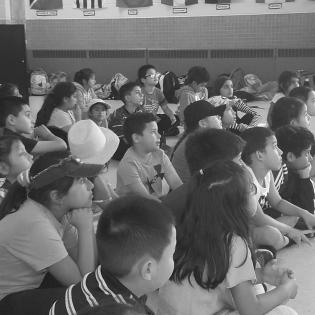Young people convince others to take care of the beach or protect the Earth. They write an essay or make an advocacy poster.
Filter by subjects:
Filter by grades:
Filter by audience:
Filter by issue area:
Filter by content type:
Filter by resource type:
resource search
Using primary source images and interviews, participants learn about life and economics during the Great Depression and how different sectors of society contributed to bringing the country out of this dark period.
Using award-winning literature, the learners describe and analyze racism in Mississippi during the Great Depression. The readers identify the injustices in the community as well as the values and self-respect that build community relationships and strength.
Through a video and simulation activity, young people build an understanding of life as a refugee.
Photo Credit: ...
Young people view and discuss the film The Gift of All: a Community of Givers and identify the influences and attributes of the generous people interviewed. They read biographies of generous people and make a...
In spite of the diverse roots that make up our country, some immigrants who come for opportunity and refugees who are forced to leave their homes are treated with disrespect or even cruelty. Young people have the opportunity to speak up and raise awareness of the beauty of diversity and value of embracing people of all backgrounds and situations. This toolkit guides youth, educators, group leaders, families, and community groups as they investigate the issue of immigration and refugees and prepare to take action.
In this unit of three lessons, we build a caring classroom culture using literature and movie clips to spark discussions. In lesson one students learn about mindfulness and gratitude to reduce anxiety. In lesson two, they learn how to listen, act, and show empathy in difficult situations.
Fairy tales are great stories for helping young people work out complicated moral issues in a make-believe context. Found in countries all around the world, the same story plays out in different contexts. Mufaro’s Beautiful Daughters is a "Cinderella" story from Africa in which kindness...
This Cultural Competence Facilitator's Guide is made up of a set of discussions and activities to be used by a family, club, or classroom to examine what it means to be culturally competent in today's society.
The conversation centers on bringing individuals together in community, as they learned from Dr. Martin Luther King, Jr. We each have individual strengths, and we are stronger together as we share our hopes for a world united in generosity for all. The children bind individual pages together...
